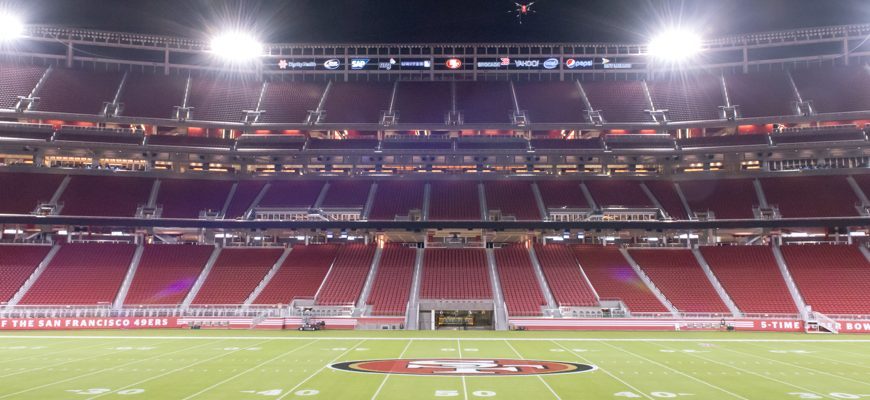Like almost every other American city, the City of Santa Clara is currently facing profound financial challenges not of its making, the results of a pandemic and an economic crisis.
What is of the City Council’s making is a Levi’s Stadium curfew policy that, since late 2017, has deprived Santa Clara’s general fund of $5 million or more that could have been put away to meet the current $34 million deficit.
When Santa Clarans approved Levi’s Stadium construction in 2010, the biggest argument stadium boosters took to the voters was the economic benefit. The campaign — for which Mayor Lisa Gillmor and Councilmembers Debi Davis and Kathy Watanabe campaigned and appeared in TV ads — was titled “Santa Clarans For Economic Progress.”
Yet, joined by Councilmember Teresa O’Neill, these Councilmembers have enacted a policy that operates to drive down the very economic benefits they used to convince voters to approve the stadium.
That policy is a weekday 10 p.m. curfew that has demonstrably driven highly profitable shows away from Levi’s Stadium — the most notable is superstar Ed Sheeran, who moved his Bay Area show to the smaller AT&T Park because of the curfew, according to Sheeran’s manager Louis Messina, who booked the first concert in Levi’s Stadium.
And Messina wasn’t the only one telling the City Council its curfew was a deal killer.
Live Nation COO Matt Prieshoff told the Council in 2017, “Shoreline, PacBell Park have 11 p.m. curfews,” he continued. “If five of those days a week aren’t available to play it’s going to be very hard [to book events at Levi’s].”
Santa Clara’s general fund receives 50 percent of the profit from non-NFL events — “performance rent.” The other 50 percent goes to the City agency that runs the stadium, the Santa Clara Stadium Authority, for expenses.
From 2015 through 2017 Santa Clara’s general fund received a total of $10.5 million in performance rent — $2.9 million in 2015, $2.5 million in 2016 and $5.1 million in 2017.
After the Council imposed its no-exceptions curfew policy in mid-2017, the performance rent dropped to $1.8 million in 2018 and was forecast to be next to nothing this year, even before the COVID-19 pandemic.
If Levi’s Stadium had hosted the same number of high-profile events in 2018 and 2019, using the lowest pre-2018 performance rent, the City’s general fund would have seen at least another $5.7 million.
Lost concerts also add up to lost sales tax revenue. State reports on taxable sales show a $75 million increase in taxable food and beverage sales in Santa Clara after the stadium opened (and before the NFL season) in the third quarter of 2014: $564 million compared to third quarter 2013’s $489 million.
In addition, the City’s general fund has also lost ticket and parking fees.
The City Council insists that the curfew is necessary.
“I have children,” Mayor Lisa Gillmor said in August 2017. “I know what it’s like to try to get them to bed at night. We have problems with transportation. We have parking issues. We have a stack of complaints after every concert.”
When the City did a survey in 2018 about stadium issues, less than 40 percent of both citywide residents and near-neighbors said they were concerned about how late weeknight events go or about noise from night-time events. (The survey revealed that residents’ single largest complaint wasn’t noise but public urination in the vicinity of the stadium.)
City Hall refuses to accept responsibility for the revenue loss, continuing to insist that it’s the 49ers management that caused the collapse of event revenue, even though the same 49ers management delivered $10.5 million to the general fund in the years before the curfew.
Mayor Lisa Gillmor and her allies also like to point to events like booking local high school football games at the stadium as the causes for the revenue decline because they lose money. But those events were booked at Levi’s Stadium during the years that Santa Clara’s general fund was receiving millions from non-NFL events.








Maybe they could build a dome over the stadium, then if it’s too hot/cold to watch the games or concerts, people would be more comfortable. It would also help block out the noise. Maybe build a special ramp/route for the people to get out of the stadium. And, I went there for training and work last year, and cannot walk too far because of a femur injury, they had no handicap parking, and it was so hot in the concession stand, I was sweating so bad it looked like I just stepped out of the shower. I felt like they didn’t care too much about the employees as well, so I quit.